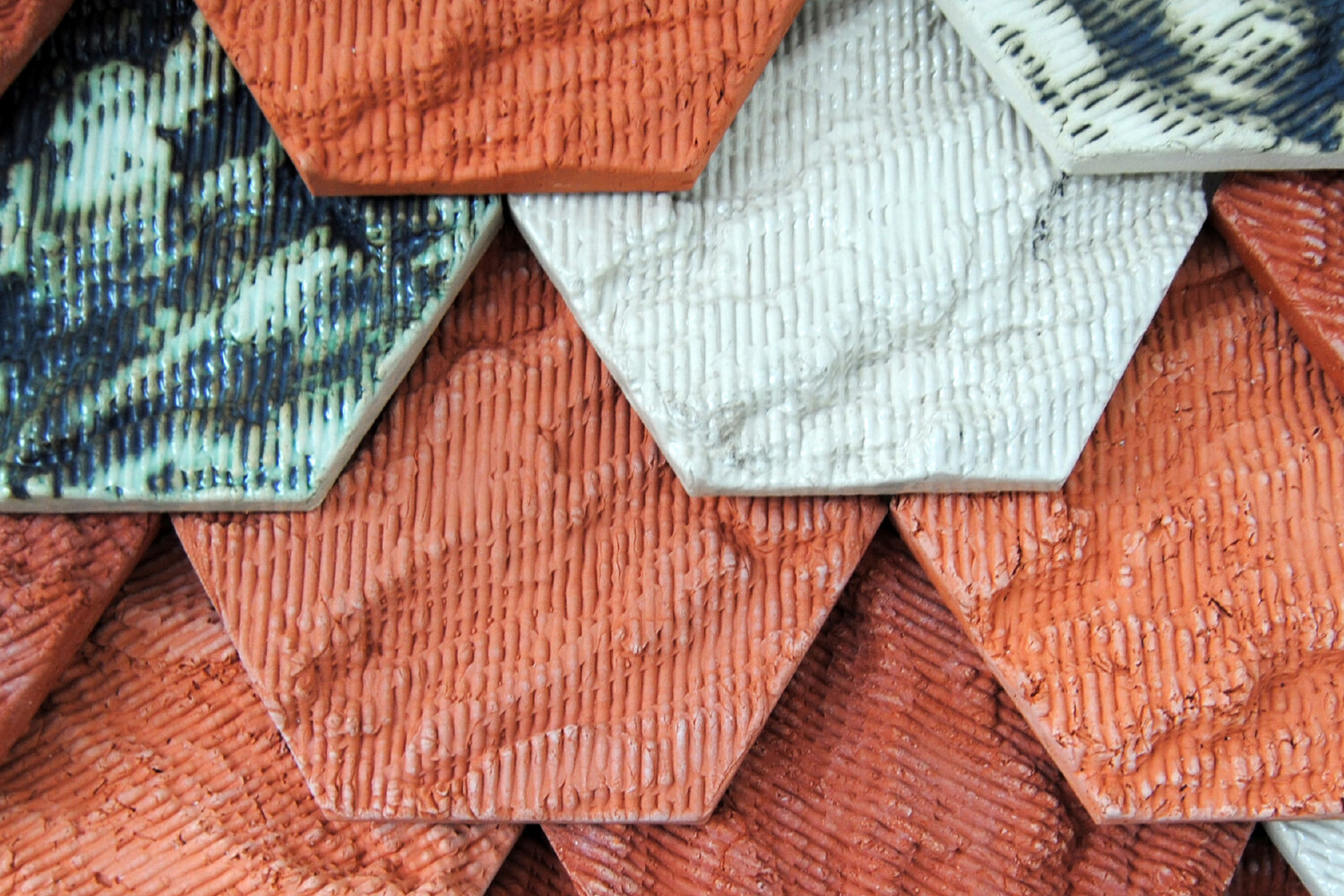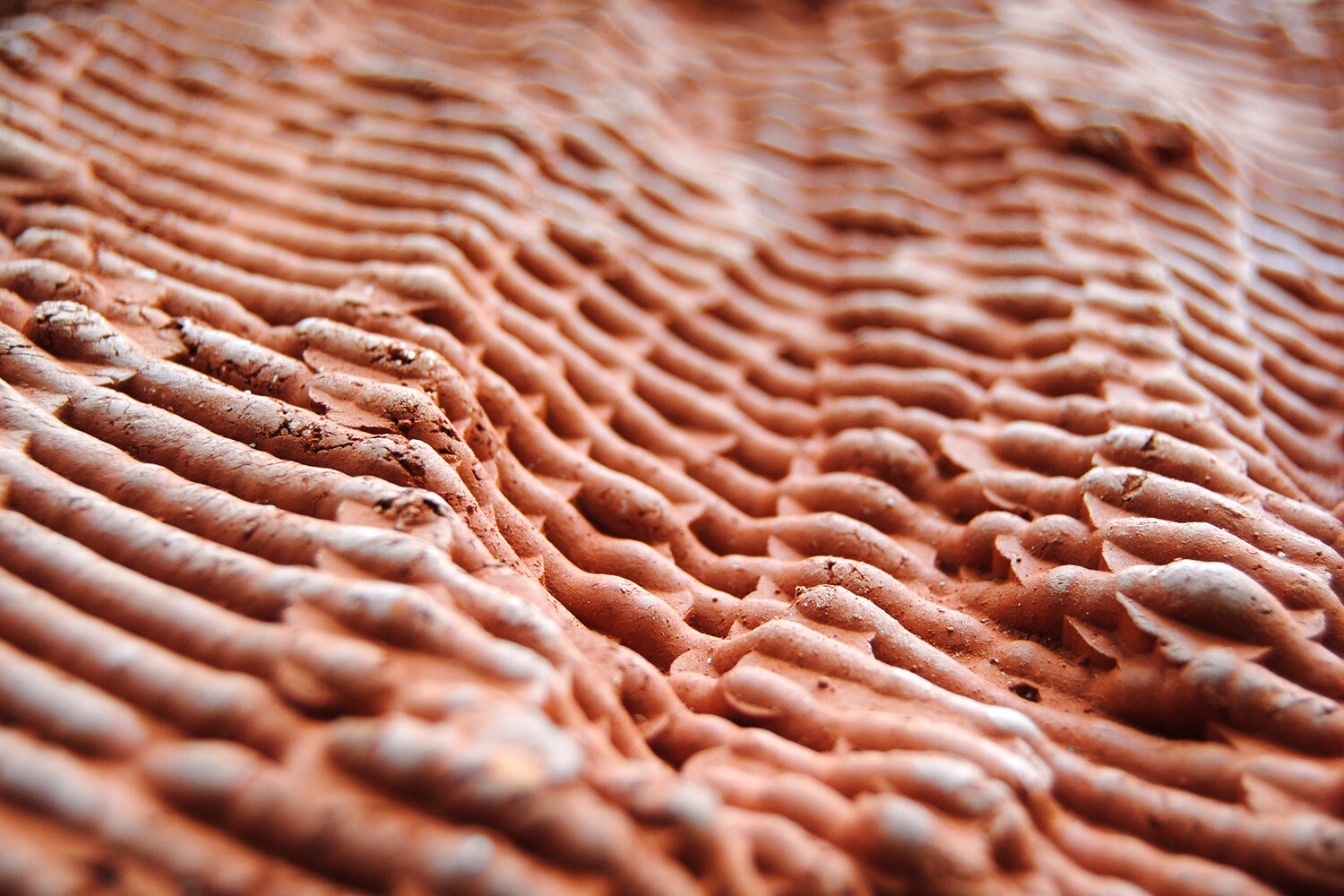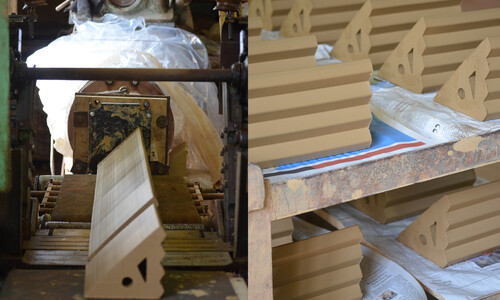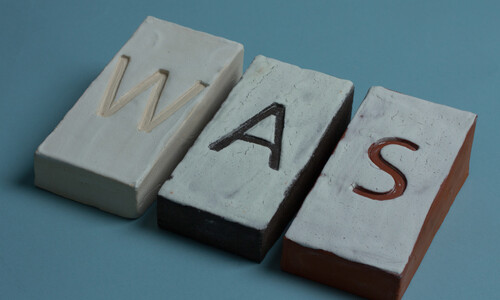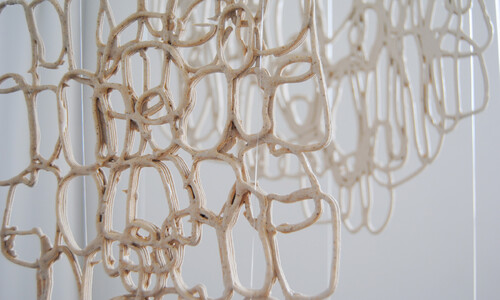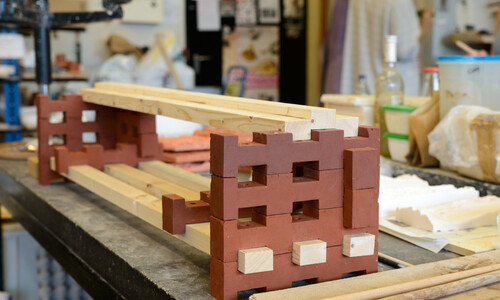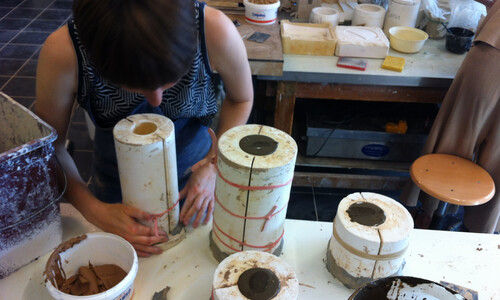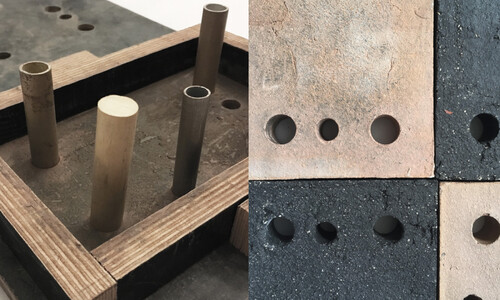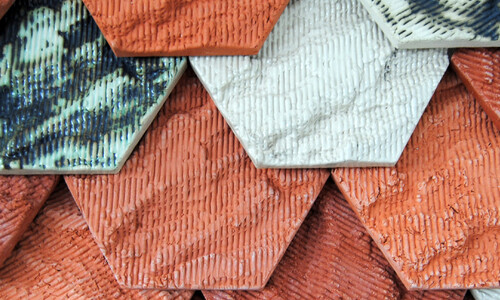The forest is a concentrated assembly of nature. Trees, shrubs, and grasses form the habitat for animals. For humans, it is more a place of longing and tranquility. Its protective space is found in the houses of the city. Instead of the rich colors and textures of nature, the city offers smooth surfaces, asphalted streets, and often uniform buildings. In the forest, the furrowed trunks of trees fill the viewer’s field of vision.
Yet despite these differences, the two habitats share similarities. Just as the bark of a tree protects its interior from external influences, the façade of a house shields its interior. The main focus of the project lay in the approach of these two extremes. Unter Bäumen (Under Trees) brings the variety and naturalness of bark into the unity of the city. The static façade is broken up and brought closer to the dynamism of nature.
Ceramic shingles form the weatherproof layer of the exterior wall. Grooves arranged in parallel on the modules allow rainwater to run slowly down the façade. Individual elements temporarily store water due to their material properties. This partially moist wall, maximized in its surface structure, provides an improved habitat for mosses and other plants. The structure of each shingle is inspired by the surface of a tree trunk. Each module is mounted at a different rotation, resulting in an irregular pattern without repetition across the overall façade.
The color palette of the façade is determined by four types of clay, which, depending on firing temperature, are either porous, dense, or glazed. While rain beads off the high-fired elements, the low-fired parts absorb water quickly and release it just as fast. This ensures optimal moisture regulation at the exterior wall and prevents frost damage to the shingles, which remain damp only for a short time.
The clay façade cladding is hung like roof tiles on a wooden lattice, connecting the ceramic elements to the supporting wall. This lattice allows for air circulation from bottom to top along the house wall. The back-ventilation ensures that any moisture forming on the façade is continuously transported away, preventing secondary damage such as rot or mold.
The exterior wall is insulated with a layer of hemp wool. This ecological insulation material is derived from the fiber of specially cultivated industrial hemp. Like synthetic materials, it protects the interior from heat and frost, but it is diffusion-open, allowing air and moisture to pass from inside to outside and vice versa.
Unter Bäumen combines local raw materials—clay, wood, and hemp—into a sustainable façade and insulation concept, visibly reflecting its connection to nature.
